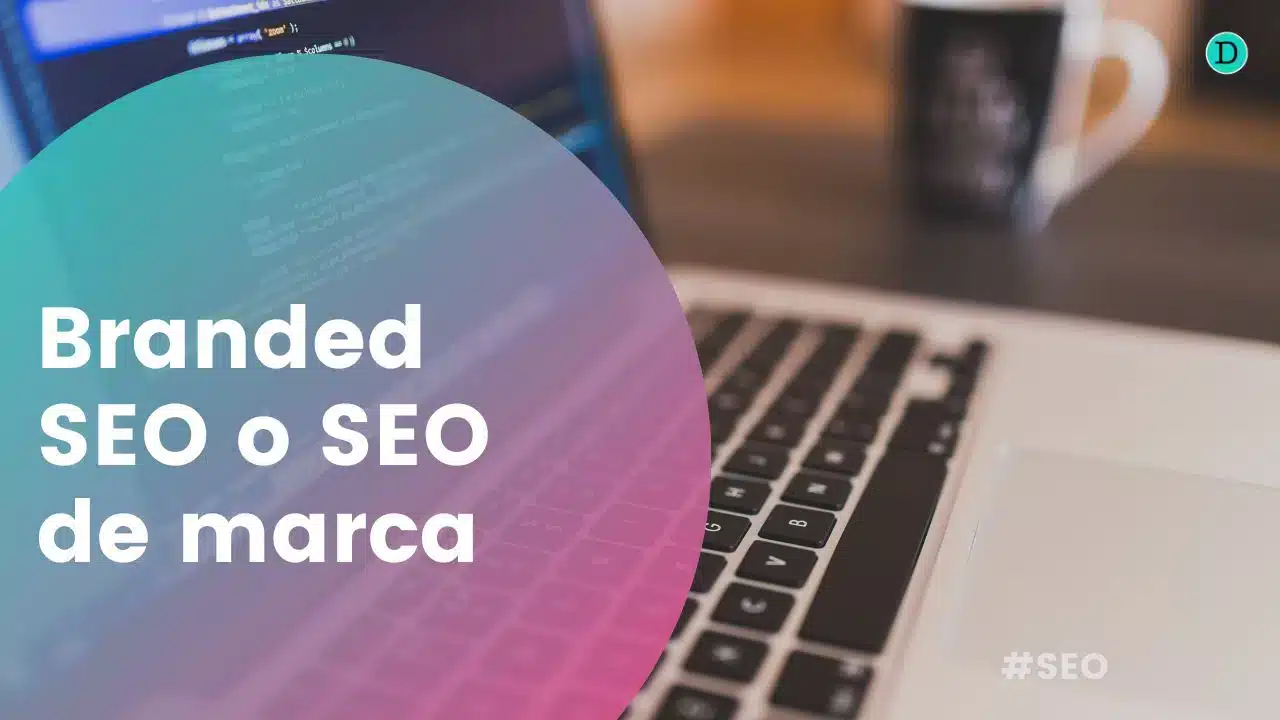If you have worked on the affiliate marketingIf you're interested, you're probably aware of this special programme that Amazon has opened up for relevant publishers.
And it is that the Amazon Onsite Affiliate Program is not a programme to which any publisher has access, but on the contrary, only first class media and serious review portals can access it.
As I have had the good fortune to work with this programme, I thought it would be interesting to write about it not only by explaining what is Onsite AmazonBut also to tell first-hand how I have experienced it, what its possibilities are, its strengths and its drawbacks.
And, above all, why I think it is a good opportunity for brands.
Before I go any further, I would like to tell you that I don't get a single euro for talking about this programme and I don't have or have any agreement with Amazon.
What is the Amazon Onsite Associates Program or Amazon Onsite Associates Program?
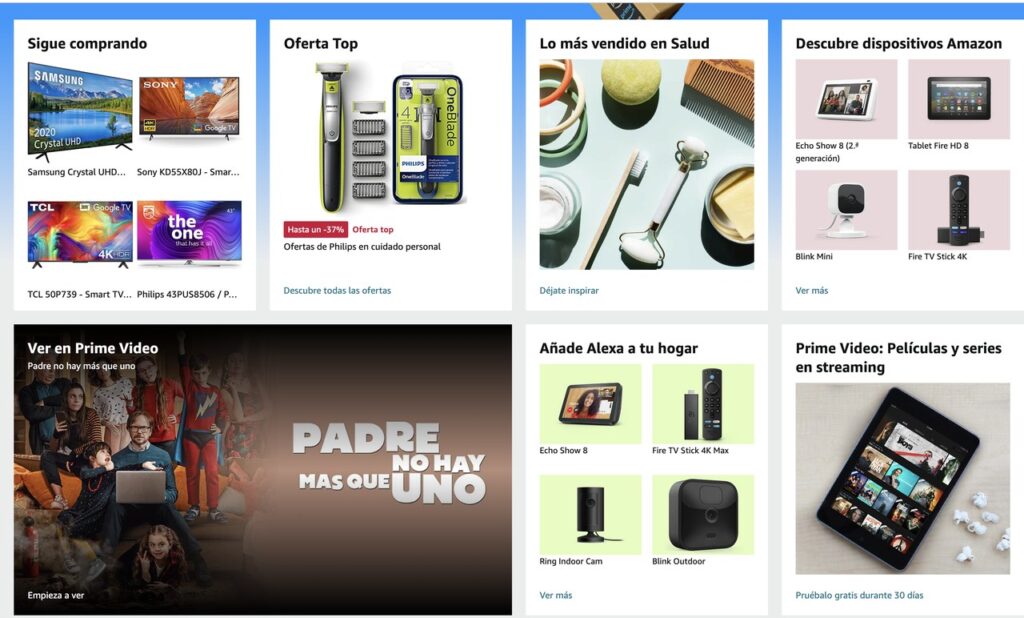
Amazon defines what this affiliate programme consists of as follows.
Onsite Affiliate Program is an extension of Amazon's affiliate program that brings third-party product content to Amazon, helping customers research and discover products they might be interested in.
https://www.amazon.es/ospublishing/onsite-associates/info
Amazon, like Google, is actually a giant search engine. And not only that, it is a search engine that has a great competitive advantage compared to the rest, the user is much more inclined to buy than in others.
If a user is on Amazon, it is because he/she wants to make a purchase.The search intention is clearly transactional.
And that makes it an excellent place for the brands seeking performance.
If to this cocktail we add the editorial recommendations of relevant media within this transactional search, we get the perfect storm to boost the conversion rate and sales of a product.
What is editorial content and how does it appear on Amazon?
Editorial content is just that, articles written by the media in which products are analysed, purchased and listed.
The main purpose is to build trust in the end consumer so that they end up making a purchase. Amazon does not attract new users in this way, so, we can deduce, they are looking for increase your e-commerce conversion rate and increase sales.
Here you can see, one of Amazon's recommendation formatsIn this case, a balcony appears with four different media recommending barbecue products.
A brand that has a presence on Amazon should aim to be listed within these recommendations. if you want to boost your salesbut more on this later.
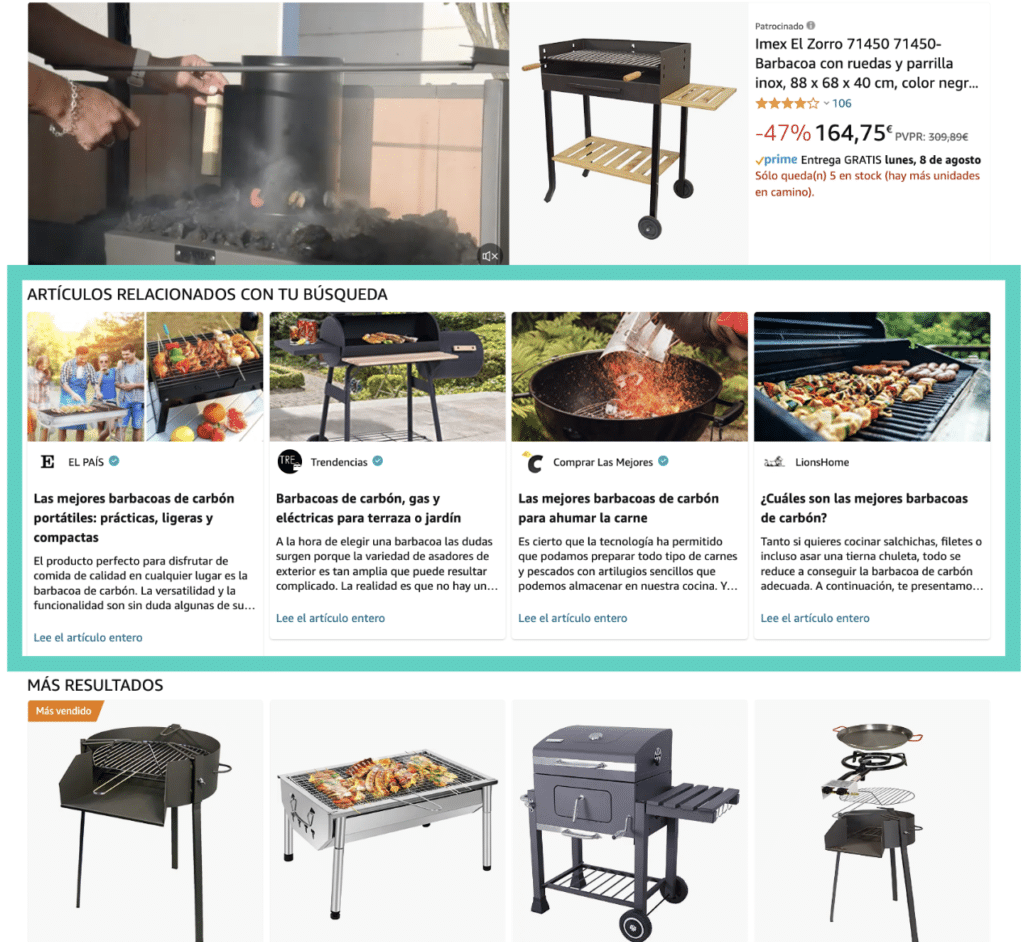
This is not the only format that appears in Amazon searches.
In this one, as you can see, the medium shares space with others players different giving the user the possibility to choose which article to read (CTR data for this format is unknown).
However, there is another format that is more interesting for the media, which is the single article.
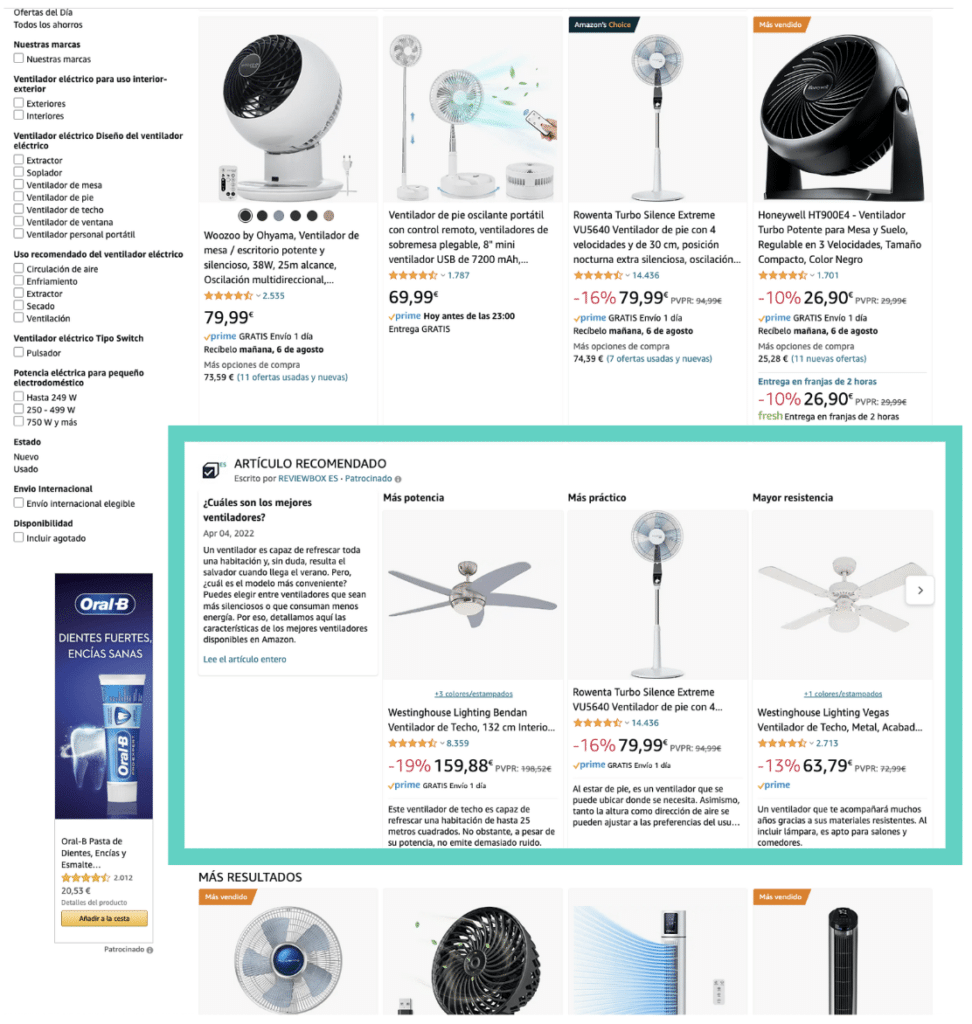
Amazon does not (for the time being) give any information or guidance from how and why these formats appear. Not even, as I said before, CTRs or frequency or impressions.
However, and to date, these are the only two "display" formats to call them somehow managed in Amazon's Onsite programme for publishers.
What do Amazon Onsite items look like?
For those of you who work with organic traffic: Amazon Onsite items do not index on GoogleSo you will never be able to compete with your own media or product review blog with this programme.
On the contrary, you will have two different sales channels.
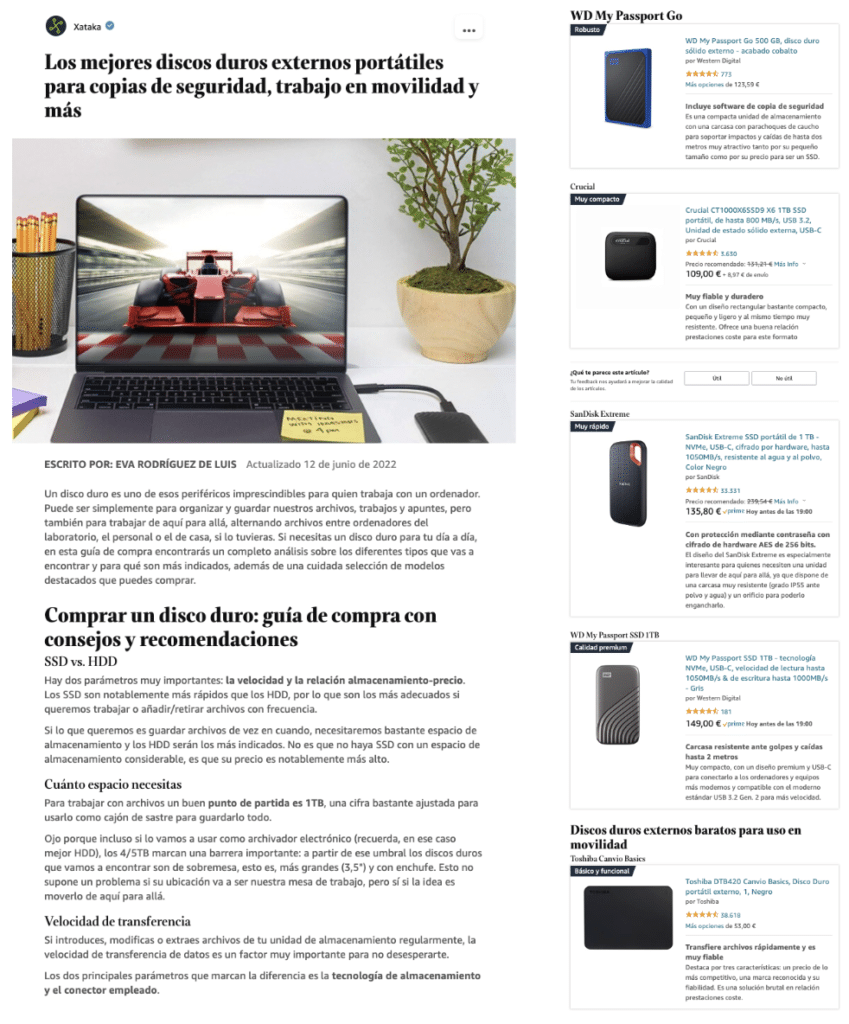
When a user clicks on read an article you will see something similar to the above (the article is continuous, the above is a montage of our own), a simple article with product recommendations.
The product sheets you see on the right of the montage are tokens that Amazon provides to users of the programme, with a clear CTA purpose.
Again, Amazon does not give visibility on how to best position products in an article or how to write it to generate more conversions, however, I can give you one piece of information, Amazon Onsite programme converts around a 8% - 12% depending on the product, which, as you know, is a real barbarity in e-commerce.
Benefits of being part of Amazon Onsite

I have previously commented that users searching on Amazon have a transactional intent.
This is true, but we must not forget that, if Amazon is transforming itself into a product recommendation siteThe reason for this is that users also expect this response from ecommerce.
In fact, in 46.7% of US internet users start by searching for a product on Amazon rather than on Google.It seems clear that this trend will also reach Spain.
As a Amazon did not give product recommendations to its usersThey used to search for them on Google, but that is changing.
For brands
One of the main benefits of being a part of Amazon as a brand is that you will access the 46% of the market that you were missing out on before. In other words, it's a question of turnover and search.
On the other hand, if the brands manage to be within the product recommendations of the leading publishers, they will win:
- Visibility.
- Credibility.
- Sales.
It seems logical to think that if a brand is recommended on Amazon Onsite by 30 media outlets will be better known, will have more credibility and, of course, will increase sales.
But how can a brand appear on this list or become part of the media's list of favourite brands? Or, to put it another way, How do brands access Amazon's Onsite programme if it is owned by the media and not the brands?
In my opinion, they can do this in three ways:
- Speaking directly to the media and paying for this appearance.
- Have your own agency manage this online presence with the media.
- Expect your brand to be named organically by the media in their editorial recommendations.
Logically, if in addition, as a brand, there is a correct strategy on Amazonwe are talking about a winning combination.
For publishers
In my opinion, for the media in Spain it constitutes an opportunity to generate more income in the affiliation environment.
We are talking about a programme that converts the 8% -12% and we understand that the media will do the same with the content. and, moreover, it will always link to Amazon.
No deception: there is no single brand e-commerce in the world that converts like Amazon converts.So if you look at the revenue numbers per grinder, the American giant will always win.
However, this may raise a long-term problem for the mediawith respect to the commission structure in the future. That is, if the media write for Amazon on and off its platform, Amazon can, at its discretion, change the commissions and shift the balance in its favour.
However, this would also imply a opportunity for all other grindersThe market for the new products, which would gain a more relevant role in the market.
However, the media complains about Amazon's lack of information about its programme. There are hardly any guidelines no information relevant on how best to compete within the platform.
In some categories, I have the impression that there may be a saturation of the editorial content due to the excessive participation of publishers.
The reports on content still have much room for improvement. and you have to sweat it out to get Amazon to accept the articles and publish them.
Despite this, which I hope will improve over time, it still seems to me to be a great opportunity for the media which, moreover, can sell the brands the appearance on the programme.
That is, a new, larger line of business.

